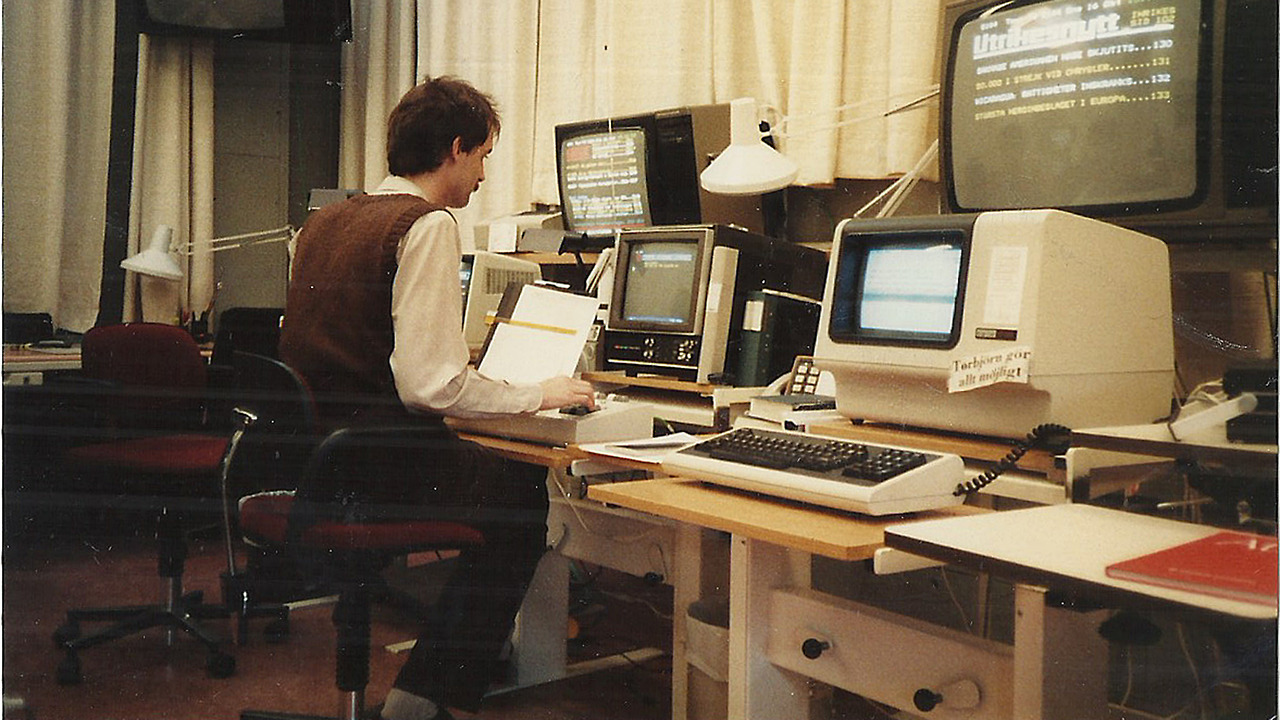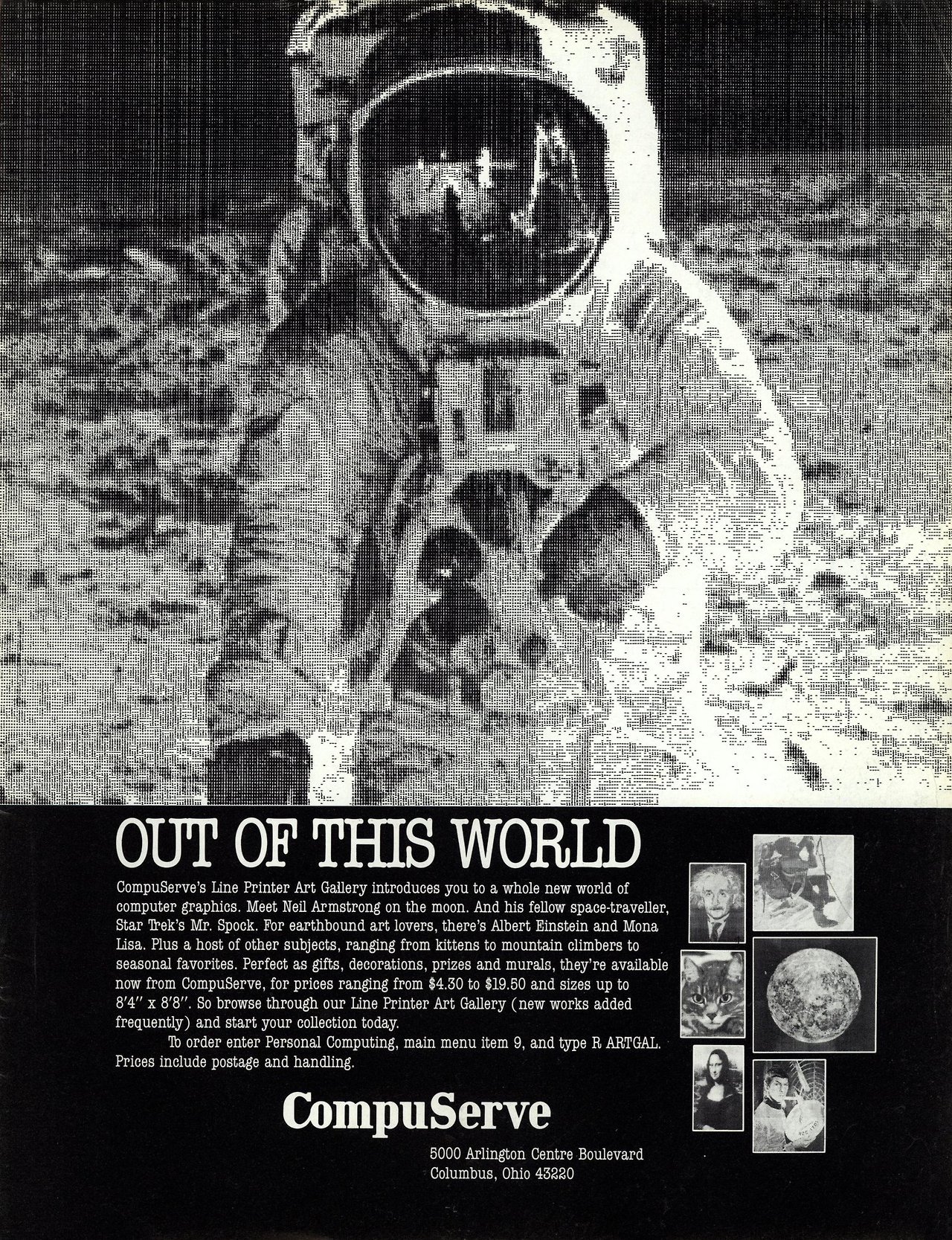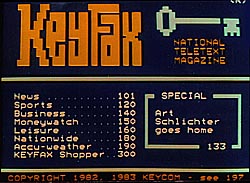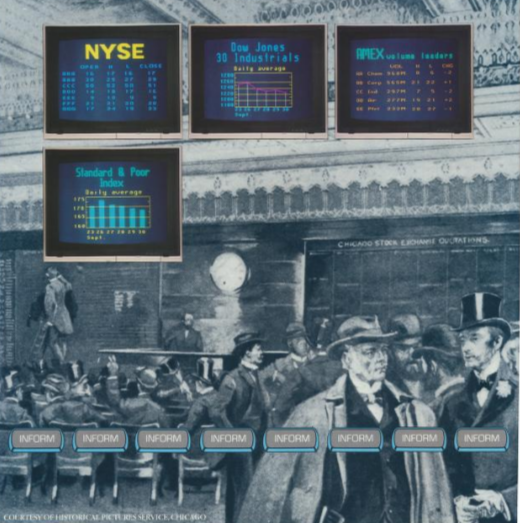

Torbjörn Johansson has worked with teletext news for almost 40 years at SVT Text. It is still used by 21% of Swedes – every day.
Taken from an interesting article about Torbjörn here.


Torbjörn Johansson has worked with teletext news for almost 40 years at SVT Text. It is still used by 21% of Swedes – every day.
Taken from an interesting article about Torbjörn here.

“You didn’t know that Compuserve sold posters of ASCII Art in 1981 but now you do.” / Jason Scott
Reabracadabra, an animated Minitel piece by Eduardo Kac from 1985. It was recently restored and Rhizome is now showing it online in Net Art Anthologies. Accompanied by a text by Goto80.
Beltel was South Africa’s videotex system. It was launched in 1986 and seems to have been quite active even in 1999.


Keyfax was the US version of the British Ceefax teletext. It was launched in 1982 but was shut down already by 1984, partly due to problems with getting the British teletext decoders approved in USA. Instead, Keyfax became a videotex service in Chicago and changed from the British standard to the American NAPLPS. But that failed too and Keyfax went bust in 1986. More info.
Post updated in 2024.
Teletext graphics by Richard Gingras, 1980. This service was called Now and ran on KCET-TV. It was part of a collaboration between CBS, NBC and PBS to test the French Antiope standard for teletext. The project was supported by Télédiffusion de France.
Images from Gingras’ website, which is only partly archived on archive.org. There’s an interview with Gingras about his teletext work here.
Post updated 2024.
An interactive videotex art work, part of A Hummer’s campaign to run for mayor of Toronto, 1982. A Hummer ended up at 2nd place with 10% of the votes. More here.